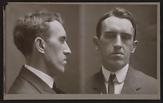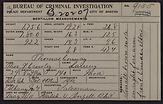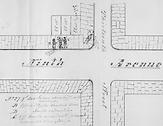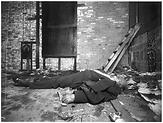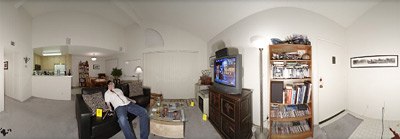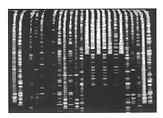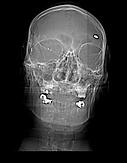Technological Views
At any given time, available technologies have aided law enforcement and forensic professionals in identifying suspects or victims, documenting the crime scene, or analyzing evidence. Discover the human ingenuity brought to bear in creating new and applying existing technologies to prevent and solve crimes.
Identifying suspects
Explore three scientific systems used to capture individual uniqueness. Each system was a novel and revolutionary discovery for its time. Observe how the systems have moved from analyzing the body, to fingerprints, to DNA, enabled by technological and scientific advances.
Bertillonage
In the late 1800s, the New York Police Department started to collect records of suspects and convicts in its penal system using Bertillonage, a complex identification method created by Alphonse Bertillon in 1879. Take a close look at the types of information collected in an effort to keep the identity of suspects and convicts visible to law enforcement agencies.
Fingerprints
Fingerprints became recognized as unique features during the mid and late 1800s. Juan Vucetich developed a fingerprint classification system which helped secure the conviction for murder of Francisca Rojas in Argentina in 1892. Now digital fingerprint databases, such as the Automated Fingeprint Identification System (AFIS), process and analyze vast numbers of fingerprints faster than ever before.
DNA
A better understanding of DNA and its uniqueness has brought forth a new era of identification. People involved in a crime, whether they be victims or perpetrators, can now be identified with DNA. Explore the first case where the DNA evidence was used to convict a murderer, and a case in which DNA analysis was used to exonerate a wrongfully convicted man.
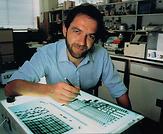

Preserving crime scenes
Examine these three examples of how a crime scene was documented and preserved—by hand-drawn, photographed, and computerized methods. And consider how each new technology is applied to improve crime-scene recording and preservation.
Top left image: Crime scene sketch included in the New York Coroner's inquest on Thomas Fitzpatrick case (January 7, 1884)
Top center and right images: Crime scene photographs taken from two perspectives according to The Bertillon System.
Bottom image: A software system allows investigators to record extremely detailed panoramic images. Panoramic photograph of a crime scene.
Developing technologies
Evolving technologies have afforded newer, faster, or more accurate ways to analyze evidence from a crime. Board this online time-machine and explore the development of three technologies whose developments and applications have revolutionized forensic investigations.
